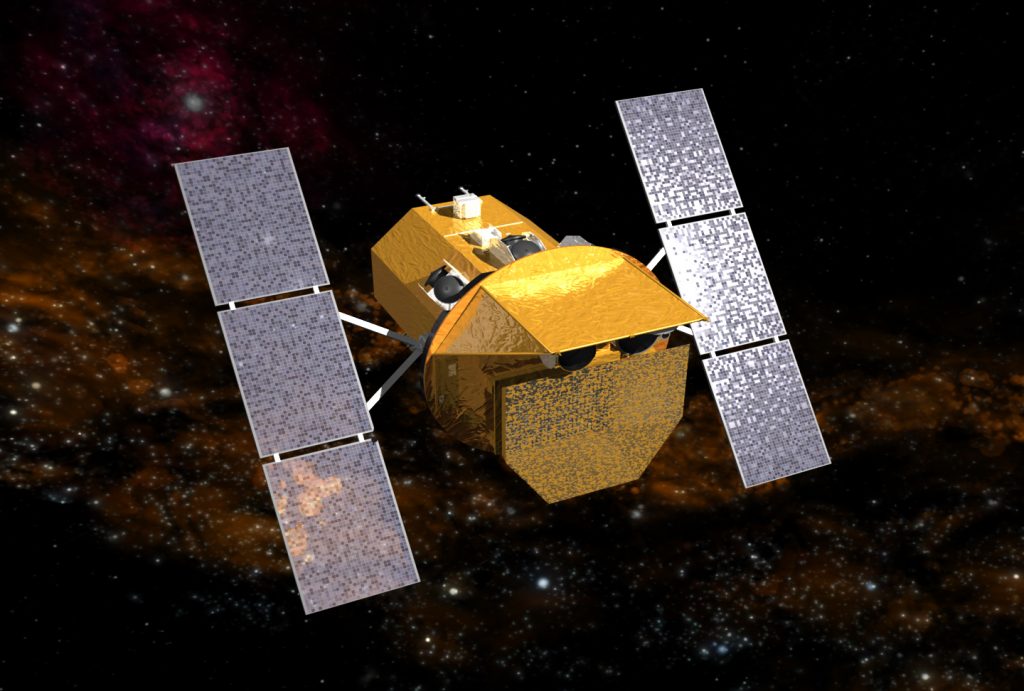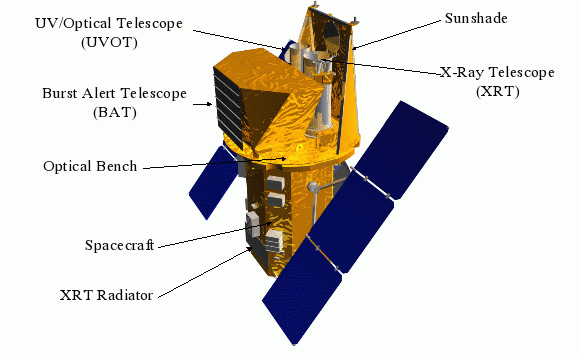Launched into a low-Earth orbit on November 20, 2004, NASA’s Swift mission is dedicated to studying the gamma-ray burst/black hole connection. Gamma-ray bursts (GRBs) are the most powerful explosions the Universe has seen since the Big Bang. They occur approximately once a day and are brief but intense flashes of gamma radiation. They come from all different directions of the sky and last from a few milliseconds to a few hundred seconds. So far scientists do not know what causes them. Swift was built in order to:
- Determine the origin of Gamma-Ray Bursts
- Classify Gamma-Ray Bursts and search for new types
- Determine how the blast-wave evolves and interacts with the surroundings
- Use Gamma-Ray Bursts to study the early Universe
- Perform the first sensitive hard X-ray survey of the sky

Credit: NASA
The Swift telescope payload is comprised of three instruments which work in tandem to provide rapid identification and multiwavelength follow-up of gamma-ray bursts (GRBs) and their afterglows (phenomenon follows the initial gamma-ray flash in most bursts).
Within 20 to 75 seconds of a detected GRB, the observatory will rotate autonomously, so the onboard X-ray and optical telescopes can view the burst. The afterglows will be monitored over their durations, and the data will be rapidly released to the public.
- Burst Alert Telescope (BAT) – 15 to 150 keV: With its large field-of-view (2 steradians) and high sensitivity, the BAT detects about 100 GRBs per year, and computes burst positions onboard the satellite with arc-minute positional accuracy.
- X-ray Telescope (XRT)– 0.3 to 10 keV: The XRT takes images and is able to obtain spectra of GRB afterglows during pointed follow-up observations. The images are used for higher accuracy position localizations, while light curves are used to study flaring and the long-term decay of the X-ray aferglow.
- UV/Optical Telescope (UVOT) – 170 to 600 nm: The UVOT takes images and can obtain spectra (via a grism filter) of GRB afterglows during pointed follow-up observations. The images are used for 0.5 arcsecond position localizations and following the temporal evolution of the UV/optical afterglow. Spectra can be taken for the brightest UV/optical afterglows, which can then be used to determine the redshift via the obsered wavelength of the Lyman-alpha cut-off.

Credits: NASA